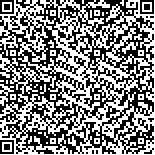| 摘要: |
| 采用磁珠富集法, 利用生物素标记的(GT)15 寡核苷酸探针从三疣梭子蟹基因组DNA 的Sau3A1 酶切的500—1000bp 片段中筛选微卫星序列。洗脱的杂交片段克隆到PMD18-T 载体上构建富集微卫星基因组文库后, 通过PCR 筛选检测出阳性克隆进行测序。在56 条测序序列中有49 条非冗余序列包含有重复次数不少于5 次的微卫星位点, 阳性序列比例达到87.5%。其中perfect 类型微卫星最大的重复次数为47 次。在47 条非冗余序列中, 共有40 条(85.1%)微卫星重复序列两端有侧翼序列能够进行引物设计。本研究中筛选的微卫星位点将为下一步的三疣梭子蟹种群遗传结构分析、经济性状的QTL 定位提供遗传标记。
|
| 关键词: 微卫星, 磁珠富集法, 三疣梭子蟹 |
| DOI:10.11693/hyhz200901014014 |
| 分类号: |
| 基金项目:宁波市重大科研攻关项目, 2005B110004 号 |
|
| MICROSATELLITE LOCI OF PORTUNUS TRITUBERCULATUS: ISOLATION AND CHARACTERIZATION |
|
WANG Jian-Ping1, YU Xiao-Wei2, SHEN Pang-You1
|
|
1.Ningbo Academy of Ocean and Fishery;2.Faculty of Life Science and Biotechnology,Ningbo University
|
| Abstract: |
| A method of magnetic-bead hybridization enrichment was used to isolate the microsatellite loci of Portunus trituberculatus. Genomic DNA was digested with restriction enzyme Sau3A1, and DNA fragments in range of 500—1000bp was agarose-gel purified and ligated to the Sau3A1 adaptor. The fragments were hybridized with biotin-labelled (GT)15 probe and captured by Streptavidin-coated magnetic beads. The target fragments were eluted, PCR amplified, inserted to PMD18-T vector, and transformed into DH5α component cell. Clones in enriched genomic DNA bank were screened through PCR method. Of the 56 sequenced clones, 49 sequences contained microsatellite having at least 5 times repeats numbers. Among 47 non-redundant microsatellite-contained sequences, about 87.5% of all the sequences, the largest repeat number of perfect type microsatellite was 47, of which 40 had enough flanking region (80—100bp) for designing
primer pairs, and will be tested for polymorphism in the future.
|
| Key words: Microsatellite (SSR), Magnetic-bead enrichment method, Portunus trituberculatus |
